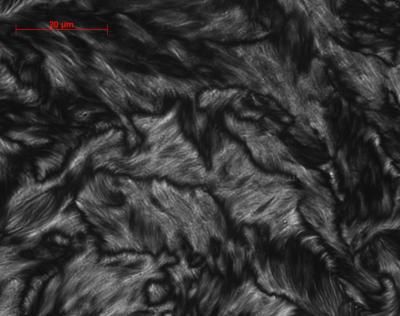Century-old rule of chemistry overturned
Major implications for drug delivery
A new study by research chemists at the University of Warwick has challenged a century old rule of pharmacology that defined how quickly key chemicals can pass across cell walls. The new observations of the Warwick researchers suggest that the real transport rates could be up to a hundred times slower than predicted by the century old "Overton's Rule". This could have major implications for the development and testing of many future drugs.
Overton's rule says that the easier it is for a chemical to dissolve in a lipid (fat) the easier and faster it will be transported into a cell. The Rule was first outlined in the 1890s by Ernst Overton of the University of Zürich. He declared that substances that dissolve in lipids pass more easily into a cell than those that dissolve in water. He then set forth an equation that predicted how fast that diffusion would happen. One of the key parameters in that equation is K which defines the lipophilicity (oil-liking nature) of the chemical. The higher the value of K, the faster the predicted cell permeation rate. For over a century, medicinal chemists have used this relationship to shape their studies and clinical trials.
A team of electrochemists from the University of Warwick used a combination of a confocal microscope and an ultramicroelectrode to study what really happens when a chemical crosses a cell membrane. Advances in technology enabled them to position an ultramicroelectrode incrediblely close to the membrane boundary (roughly 20 microns away) where it was used to generate a range of acids that should be able to diffuse relatively easily into a cell. These techniques allowed every step of the diffusion process to be directly examined. Previous studies had not been able to observe every step of the process and often required artificial stirring of the solutions.
The results stunned the researchers. While the acids did diffuse across a lipid membrane, they did so at rates that were diametrically opposite to the predictions of the Rule, i.e. the most lipophilic molecules were actually transported slowest. The researchers studied four acids (acetic, butanoic, valeric, and hexanoic) that had increasingly larger "acyl" (or carbon) chains. The longer the carbon chain, the easier the chemical dissolves in lipids and, therefore, according to Overton, the faster they should diffuse across a lipid membrane. In fact, the University of Warwick researchers observed that for these four acids the exact opposite is true: the easier it is for an acid to dissolve in a lipid, the slower it is transported across the membrane.
The research team will now use their technique to examine the diffusion into cells of a range of other chemicals. The lead researcher on the study from the University of Warwick, Professor Patrick Unwin, said: "This was a surprising and exciting finding. Our direct observations appear to totally undermine a key rule that has withstood the test of time for over a century. We will now make observations with a range of other chemicals, and with other techniques, to further elucidate the molecular basis for our observations. Text books will have to be rewritten to revise a rule that has been relied on for over a century. Advanced techniques, such as the one we have developed, should give much clearer insight into the action of a wide range of drug molecules, which will be of significant interest to drug developers."
Original publication: John M. A. Grime, Martin A. Edwards, Nicola C. Rudd and Professor Patrick R. Unwin; "Quantitative visualization of passive transport across bilayer lipid membranes"; Proceedings of the National Academy of Sciences (PNAS) 2008.
Topics
Organizations
Other news from the department science
These products might interest you

Anopore™ by Cytiva
Precise filtration made easy with Anopore inorganic membranes
The aluminum oxide filter membrane that can increase the purity or yield of your analyte

Hahnemühle LifeScience Catalogue Industry & Laboratory by Hahnemühle
Wide variety of Filter Papers for all Laboratory and Industrial Applications
Filtration Solutions in the Life Sciences, Chemical and Pharmaceutical Sectors

Get the chemical industry in your inbox
By submitting this form you agree that LUMITOS AG will send you the newsletter(s) selected above by email. Your data will not be passed on to third parties. Your data will be stored and processed in accordance with our data protection regulations. LUMITOS may contact you by email for the purpose of advertising or market and opinion surveys. You can revoke your consent at any time without giving reasons to LUMITOS AG, Ernst-Augustin-Str. 2, 12489 Berlin, Germany or by e-mail at revoke@lumitos.com with effect for the future. In addition, each email contains a link to unsubscribe from the corresponding newsletter.


























































